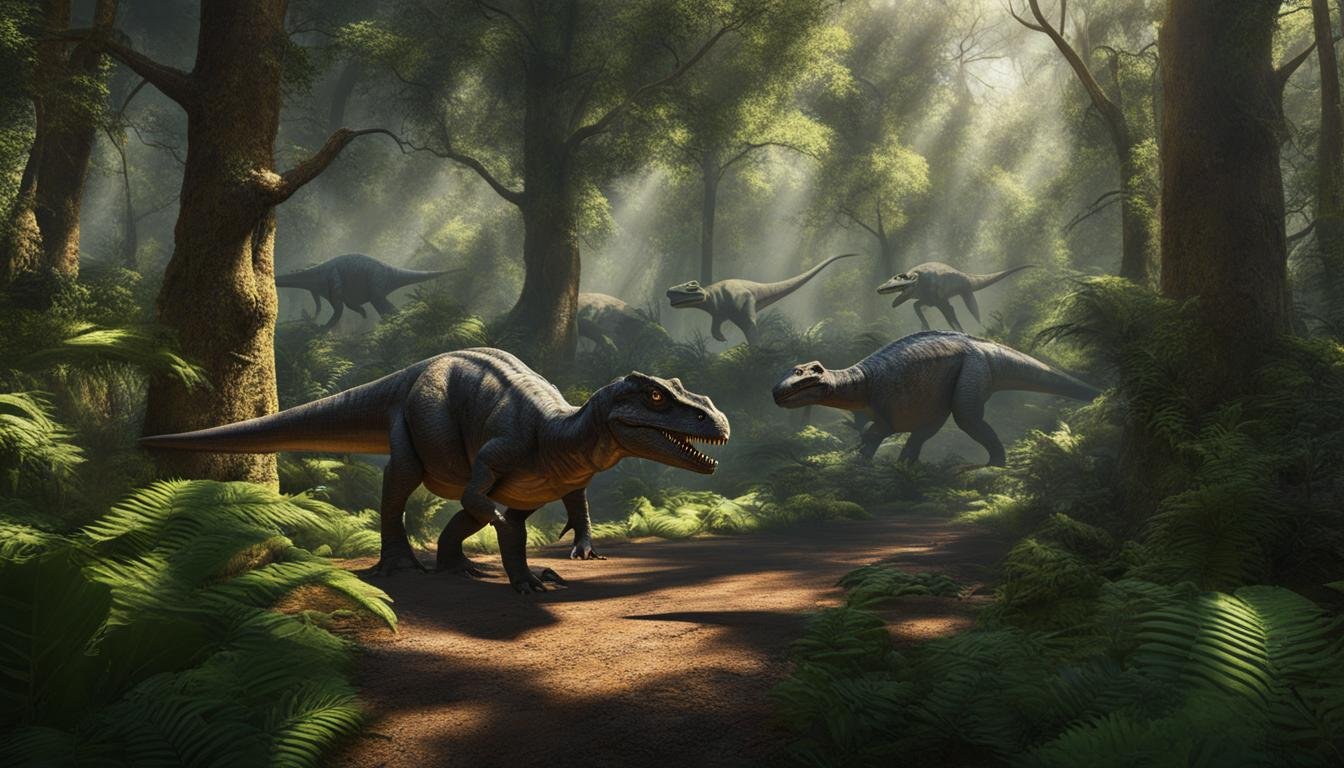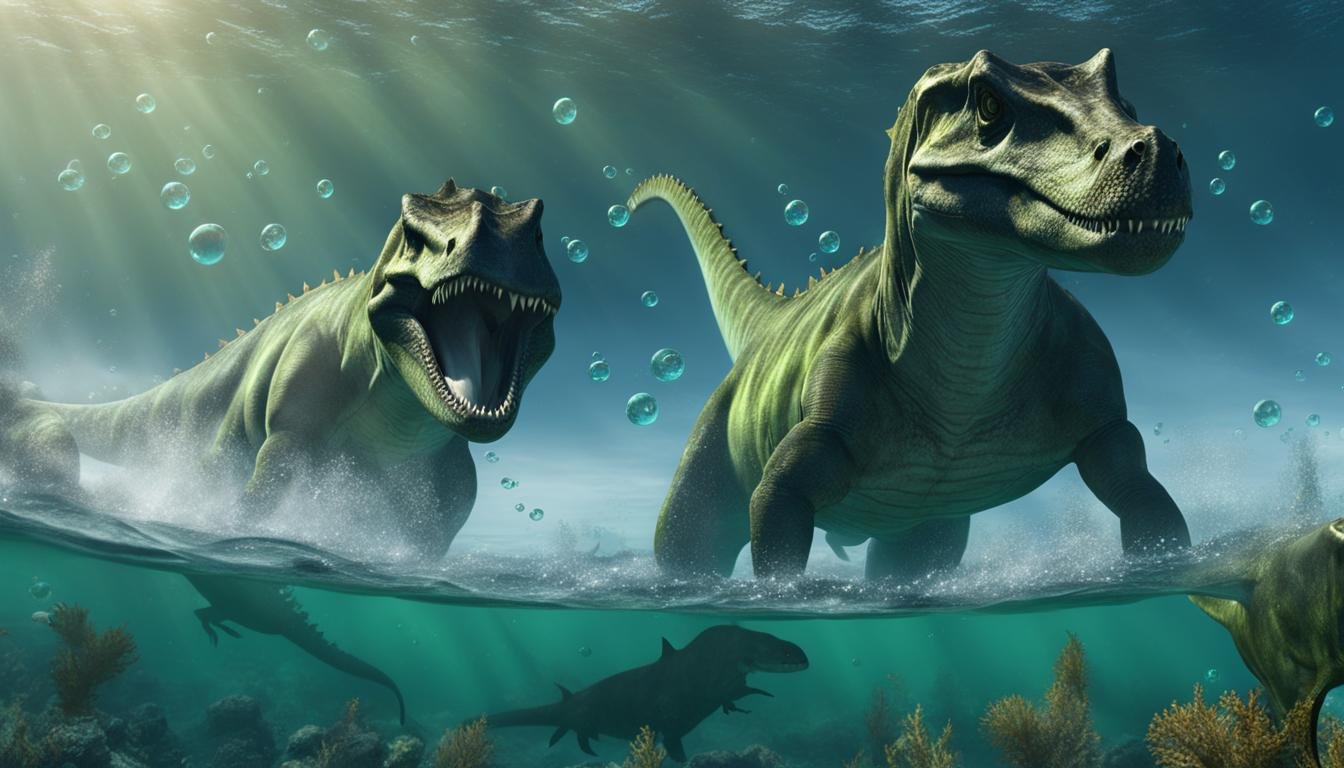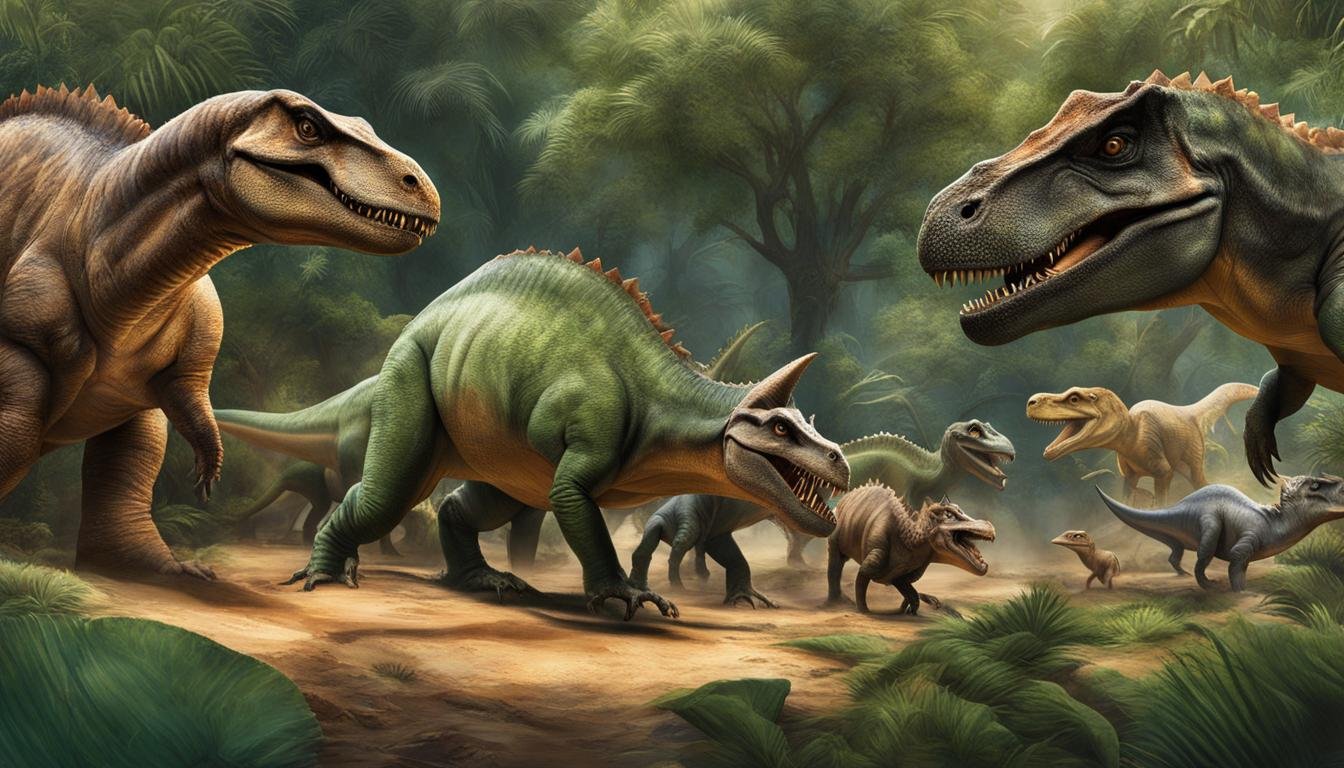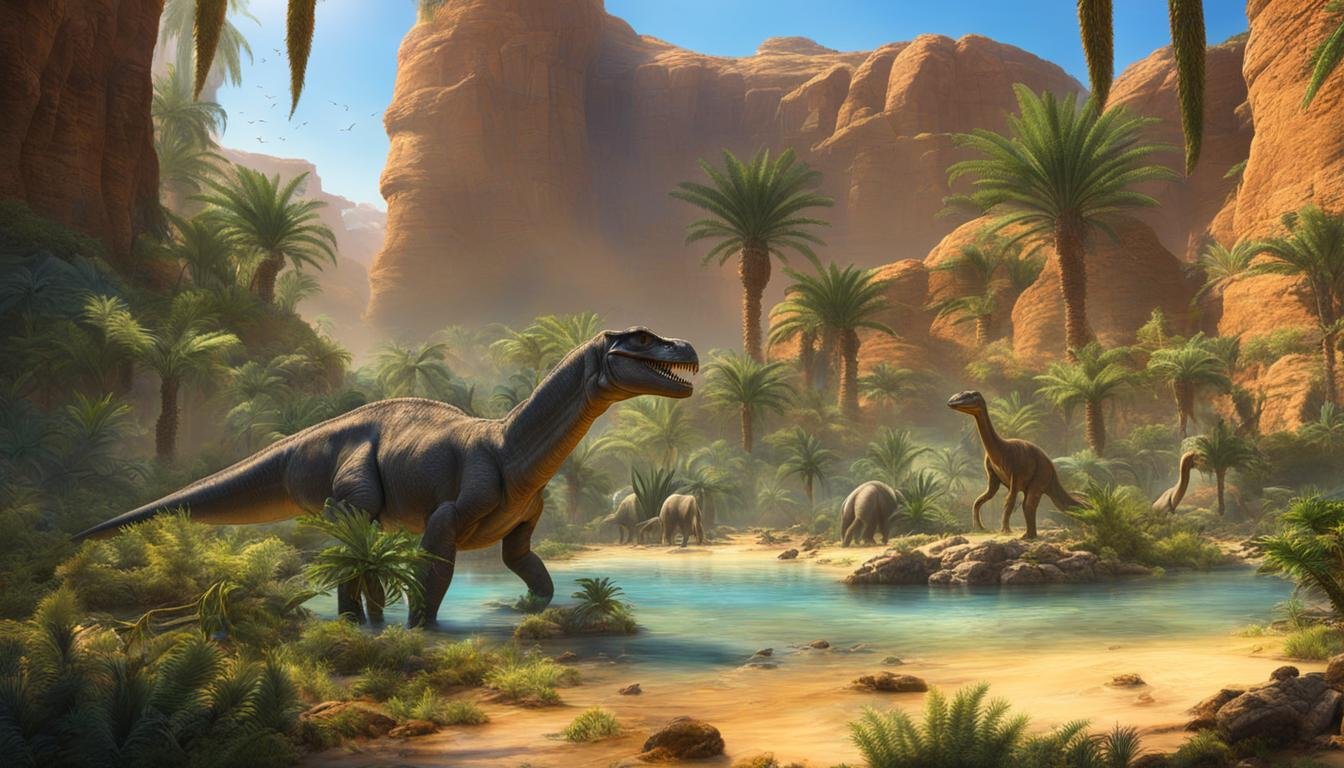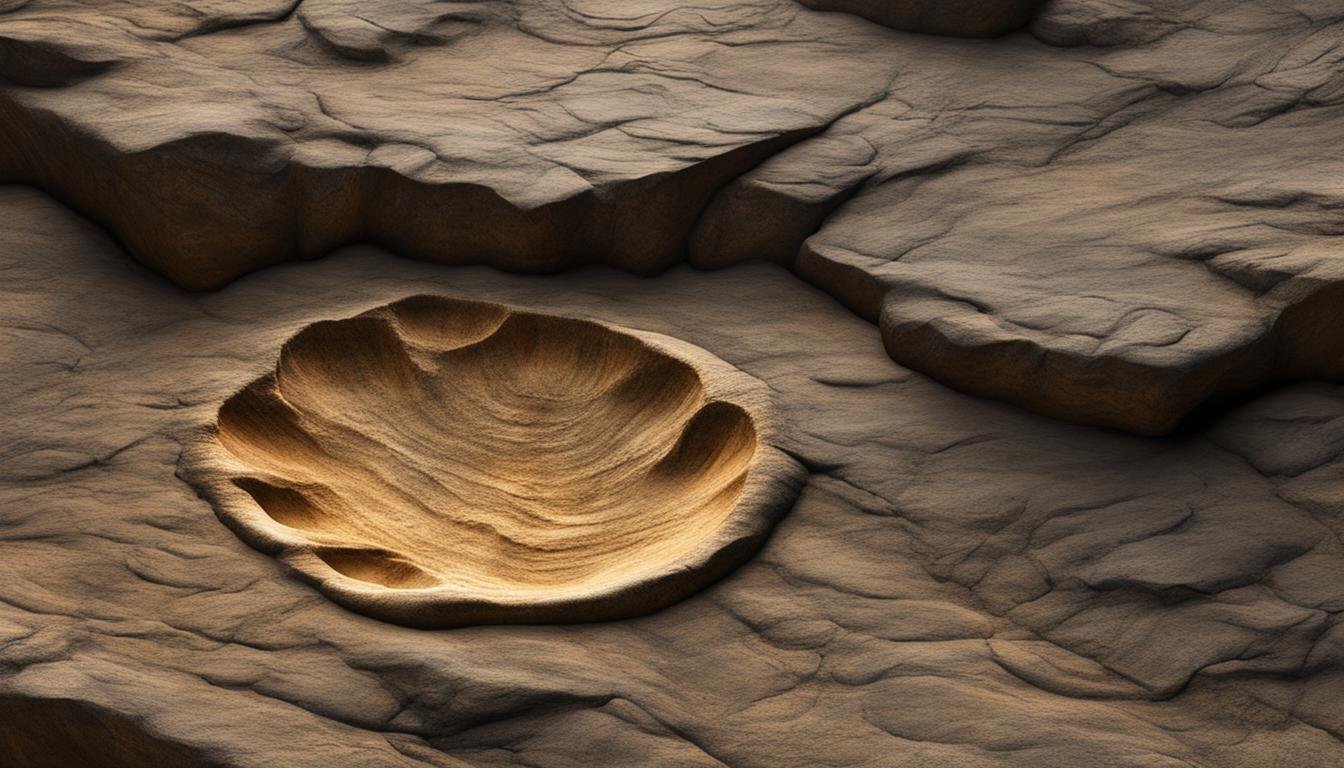Welcome to the fascinating world of carnivorous dinosaurs! These ancient predators roamed the Earth millions of years ago, leaving behind clues about their hunting techniques and preferred habitats. From the ferocious Tyrannosaurus rex to the nimble Velociraptor, these creatures were masters of the hunt. In this article, we will explore the hunting grounds of carnivorous dinosaurs, their predatory behaviors, and the unique adaptations that made them formidable hunters. Get ready to embark on a thrilling journey into the prehistoric world!
| Key Takeaways | Description |
|---|---|
| Hunting Skills of Carnivores | Carnivorous dinosaurs were adept hunters and scavengers, relying on their skills to obtain meat. |
| Evolutionary Diversification | The evolution of these dinosaurs resulted in a distinct separation between large and small species, with a notable gap in medium-sized carnivores. |
| Traits of Small Carnivores | Smaller species like Velociraptor and Microraptor possessed distinctive features such as sharp claws and agility due to their modest size. |
| Dominance of Large Carnivores | Larger carnivorous dinosaurs, such as Tyrannosaurus rex and Spinosaurus, stood at the top of the food chain, boasting significant size and strength. |
| Insights from Hunting Strategies | Research into the hunting behaviors and strategies of these dinosaurs sheds light on their survival mechanisms and interactions within the prehistoric ecosystem. |
The Evolution of Carnivorous Dinosaurs
Carnivorous dinosaurs have a fascinating evolutionary history, characterized by the emergence of both large and small species. Unlike modern carnivore communities that encompass a range of sizes, carnivorous dinosaurs had a scarcity of medium-sized individuals. This unique division in size may be attributed to the rapid growth rates of juvenile carnivorous dinosaurs, such as the iconic Tyrannosaurus rex. It is believed that the intense competition for prey between juvenile carnivores and medium-sized dinosaurs led to the decline of the latter.
The growth rates of carnivorous dinosaurs played a crucial role in shaping their hunting grounds and prey preferences. The relatively rapid growth of juvenile carnivores put medium-sized dinosaurs at a disadvantage, explaining their relative scarcity in the fossil record. This evolutionary dynamic sets carnivorous dinosaurs apart from their modern counterparts, where a wide spectrum of sizes coexist within the same carnivore community.
To better understand the unique nature of carnivorous dinosaur evolution, it is essential to examine the distinct characteristics of both large and small species. Large carnivorous dinosaurs, such as the Tyrannosaurus rex and Spinosaurus, were apex predators boasting formidable size and power. In contrast, small carnivorous dinosaurs like Velociraptor and Microraptor had unique traits, including sharp claws and small sizes, which allowed them to excel in their hunting strategies.
| Species | Size | Main Characteristics |
|---|---|---|
| Tyrannosaurus rex | Large | Powerful jaws and size |
| Spinosaurus | Large | Unique adaptations for swimming |
| Velociraptor | Small | Sharp claws and feathers |
| Microraptor | Small | Four bird-like wings, sickle-shaped claw |
The diversity and intricacy of carnivorous dinosaur evolution provide valuable insights into the prehistoric world. By studying their growth rates, prey competition, and unique hunting adaptations, scientists continue to unravel the mysteries surrounding these ancient predators’ hunting strategies and survival in the prehistoric era.
Small Carnivorous Dinosaurs
Small carnivorous dinosaurs were a fascinating and diverse group of creatures that coexisted alongside their larger counterparts. While they may not have had the imposing size of their larger relatives, these small predators possessed unique characteristics that allowed them to thrive in their environments.
One well-known small carnivorous dinosaur is Velociraptor, which gained popularity through its depiction in “Jurassic Park.” Despite its turkey-sized stature, Velociraptor was a formidable hunter with sharp claws and likely even had feathers. Its small size and agility allowed it to swiftly pursue and capture prey.
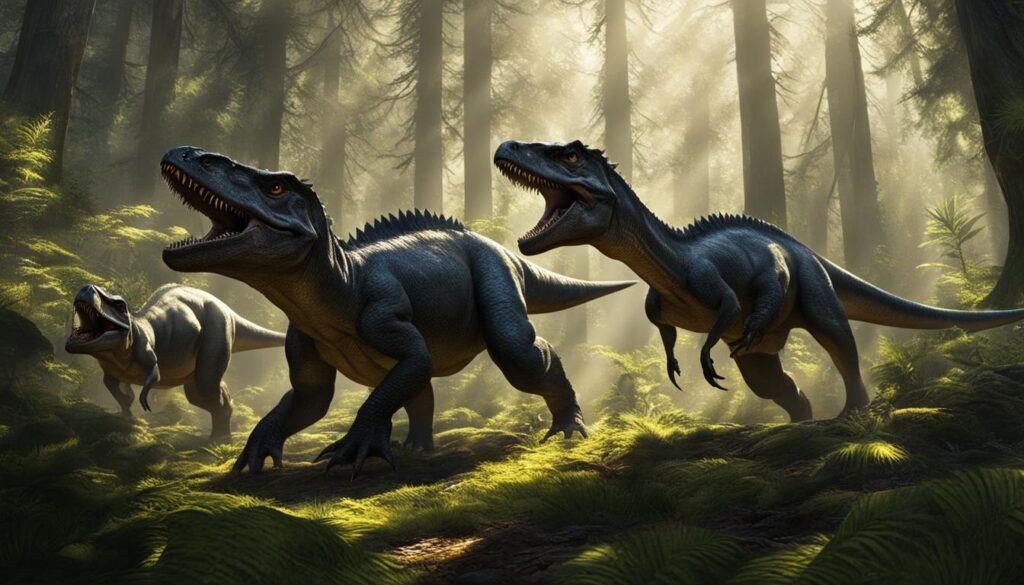
Microraptor was another small dinosaur with a fascinating adaptation – four bird-like wings. This dinosaur used its wings to glide through the forest canopy, giving it a unique advantage when hunting or evading larger predators. Additionally, Microraptor possessed a sickle-shaped claw on its feet, which it likely used to latch onto prey or climb trees.
“Small carnivorous dinosaurs coexisted with larger species, employing different hunting techniques.”
Other small carnivorous dinosaurs include Struthiomimus, Oviraptor, Bambiraptor, Dromaeosaurus, and Troodon. Struthiomimus was larger than other small carnivores and had a beaked head, resembling an ostrich. Oviraptor had no teeth but possessed sharp claws, and it was initially associated with what were thought to be Protoceratops eggs. Bambiraptor was a fierce predator that hunted mammals and reptiles, exhibiting similar characteristics to modern birds. Dromaeosaurus was a deadly predator with sharp teeth, claws, and a quick attack, while Troodon is often considered one of the most intelligent dinosaurs, equipped with a large brain and exceptional hunting abilities.
Overall, the small carnivorous dinosaurs played a significant role in the prehistoric ecosystems. Their unique adaptations and hunting strategies provide valuable insights into the diversity and behaviors of carnivorous dinosaurs.
| Dinosaur | Description |
|---|---|
| Velociraptor | A turkey-sized dinosaur with sharp claws and likely feathers. |
| Microraptor | A small dinosaur with four bird-like wings and a sickle-shaped claw on its feet. |
| Struthiomimus | Larger than other small carnivorous dinosaurs, resembling an ostrich. |
| Oviraptor | No teeth but sharp claws; associated with what were thought to be Protoceratops eggs. |
| Bambiraptor | A small but fierce hunter, preying on mammals and reptiles. |
| Dromaeosaurus | A deadly predator with sharp teeth, claws, and a speedy attack. |
| Troodon | Considered one of the smartest dinosaurs, equipped with a large brain and hunting abilities. |
Large Carnivorous Dinosaurs
Large carnivorous dinosaurs were some of the most fearsome creatures to ever roam the Earth. These mighty predators ruled over their respective ecosystems, using their size, strength, and unique adaptations to dominate their prey.
One notable example of a large carnivorous dinosaur is Saurophaganax. This massive predator lived during the Late Jurassic period and was estimated to be around 40 feet long. Saurophaganax was known for feeding on juvenile plant eaters as well as other carnivorous dinosaurs, making it a formidable force in its hunting grounds.
“Saurophaganax was a true giant among carnivorous dinosaurs, preying upon not only herbivorous dinosaurs but also other large predators. Its size and power allowed it to establish itself as a dominant force in its ecosystem,” says Dr. Elizabeth Bennett, a paleontologist specializing in dinosaur behavior.
Another impressive carnivorous dinosaur is Carnotaurus. This dinosaur stood out with its distinctive horns on its skull, which were likely used in combat with other males for dominance and mating rights. Carnotaurus was a formidable predator, utilizing its speed and agility to quickly close in on its prey before using its sharp teeth to deliver a fatal bite.
One of the most well-known large carnivorous dinosaurs is the Tyrannosaurus Rex. This colossal predator, often referred to as the “king of the dinosaurs,” had a massive size, a powerful bite, and intelligence for hunting. The Tyrannosaurus Rex is estimated to have reached lengths of up to 40 feet and weighed as much as 9 tons, making it one of the largest carnivorous dinosaurs to have ever lived.
| Dinosaur | Length | Weight |
|---|---|---|
| Saurophaganax | 40 feet | Unknown |
| Carnotaurus | 26-30 feet | Approximately 5,000 pounds |
| Tyrannosaurus Rex | 40 feet | 9 tons |
These large carnivorous dinosaurs played a crucial role in shaping the ecosystems of the past. By studying their hunting strategies, scientists can gain valuable insights into the behavior and survival of these remarkable creatures in the prehistoric world.
Hunting Techniques of Carnivorous Dinosaurs
Carnivorous dinosaurs were formidable hunters that employed a variety of hunting techniques to overpower their prey. From the “bite and slice” technique used by larger dinosaurs to the specialized toe claws of smaller species, these dinosaurs had unique adaptations that allowed them to thrive in their environments.
Bite and Slice Technique
Some carnivorous dinosaurs, like Albertosaurus and Giganotosaurus, likely employed a “bite and slice” technique when hunting larger dinosaurs. With their powerful jaws and sharp teeth, these predators would bite into their prey and then use their serrated teeth to rip and tear the flesh.
Specialized Toe Claws
Other dinosaurs, such as Velociraptor and Deinonychus, had specialized toe claws that played a crucial role in their hunting strategies. These curved and razor-sharp claws could deliver deadly slashes, allowing the dinosaurs to inflict severe injuries on their prey. Additionally, these toe claws could act as grappling hooks, enabling these dinosaurs to hold onto larger prey and bring them down.
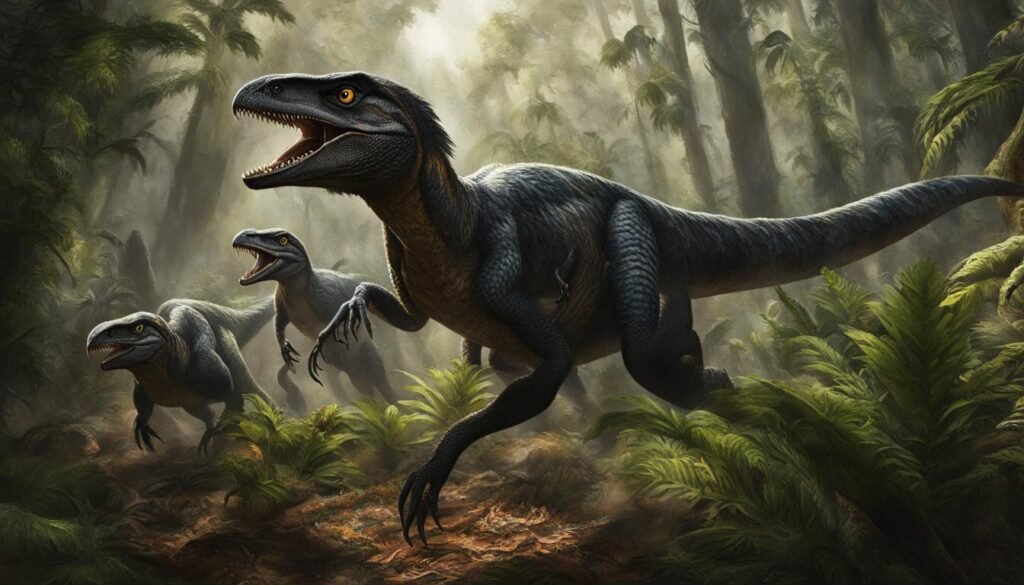
In addition to the “bite and slice” technique and specialized toe claws, other carnivorous dinosaurs used their large claws to hold or subdue their prey. For example, Allosaurus would use its powerful claws to grip its prey while using its jaws and teeth to deliver a fatal bite.
The hunting techniques of carnivorous dinosaurs provide fascinating insights into their behavior and survival strategies. These adaptations allowed them to dominate their ecosystems and establish their position as apex predators in the prehistoric world.
Conclusion
Carnivorous dinosaurs were remarkable creatures that exhibited extraordinary hunting strategies and an indomitable spirit. Through their evolution, these ancient predators shaped their hunting grounds and prey preferences, leading to a fascinating diversity in their hunting techniques.
Coexistence between small and large carnivorous dinosaurs was prevalent, with each employing distinct strategies to ensure their survival. Small carnivorous dinosaurs like Velociraptor and Microraptor relied on their sharp claws and agility to swiftly overpower their prey. In contrast, large carnivorous dinosaurs such as the Tyrannosaurus rex reigned as apex predators, utilizing their colossal size, power, and intelligence to dominate their ecosystems.
Studying the hunting strategies of carnivorous dinosaurs provides us with valuable insights into their behavior and survival in the prehistoric world. Their ability to adapt and evolve over millions of years showcases their unparalleled tenacity and relentless pursuit of prey. By understanding their hunting grounds and strategies, we unravel the fascinating stories of these ancient hunters and gain a deeper appreciation for the remarkable creatures that once roamed the Earth.

